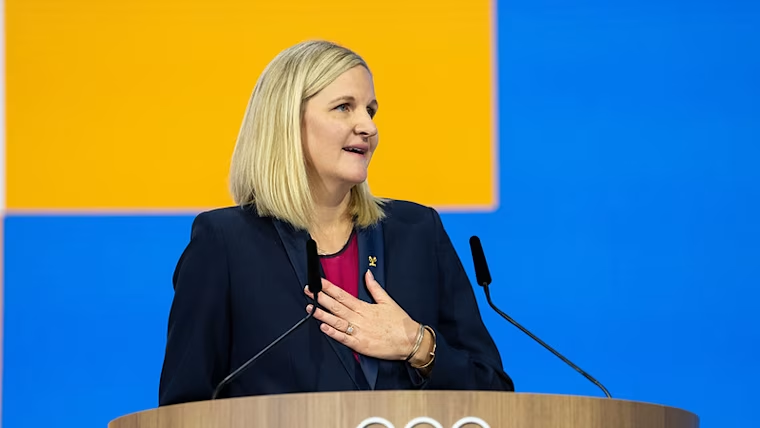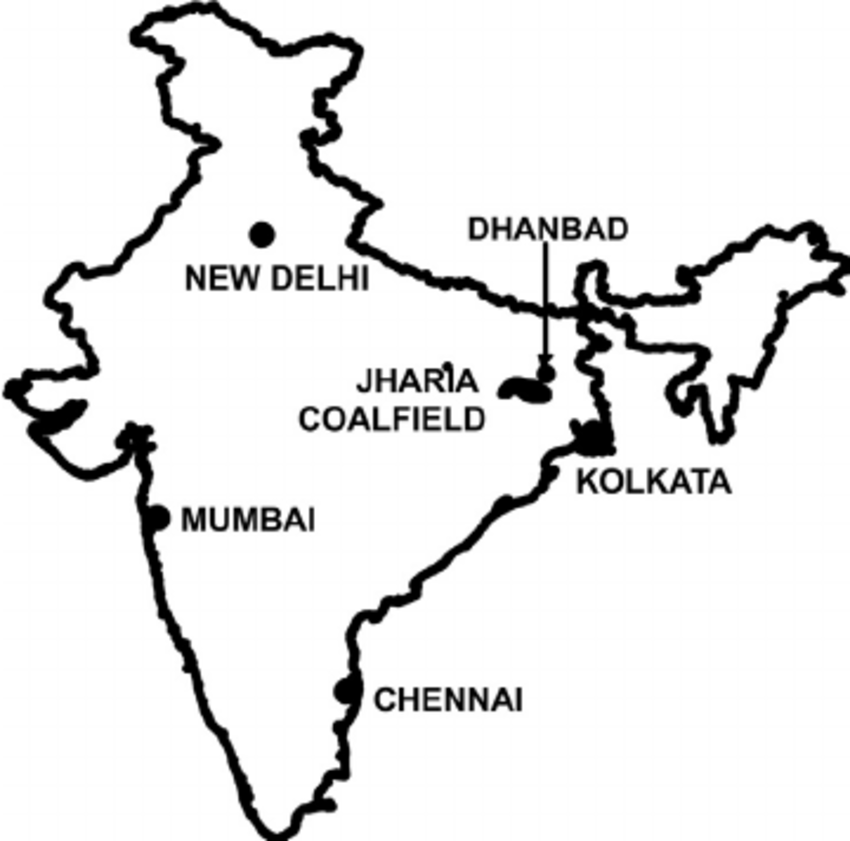Uttar Pradesh Switch to Hindi
IOC Gets First Woman President
Why in News?
On 23rd June 2025, Kirsty Coventry became the first female and first African president of the International Olympic Committee (IOC), coinciding with the IOC's 131st anniversary.
- Thomas Bach, the outgoing president who completed his 12-year term starting in 2013, now assumes the honorary title of IOC President.
Key Points
About Kirsty Coventry
- Olympic Success: She is Zimbabwe’s most successful Olympian, having won seven of the country’s eight Olympic medals to date.
- No African athlete has won more Olympic medals than Coventry, who specialized in backstroke and medley swimming.
- Olympic Medals: At the Athens 2004 Olympics, she won three medals: a gold in the 200m backstroke, a silver in the 100m backstroke, and a bronze in the 200m medley.
- She defended her 200m backstroke title at Beijing 2008 and added three silver medals.
- World Titles and Retirement: Coventry won three long-course world titles in 2005 and 2009, along with four short-course gold medals in 2008.
- She retired from competitive swimming after the Rio 2016 Olympics, marking her fifth Olympic appearance.
- Government Role: In September 2018, she was appointed as Zimbabwe's Minister of Youth, Sport, Arts, and Recreation.
- IOC Involvement: Elected to the IOC in 2013 as a member of the Athletes’ Commission, she was re-elected as an individual IOC member in 2021.
- Role as IOC President:
- She will oversee the Olympic Winter Games Milano Cortina 2026 as her first Olympic Games.
- She will also be overseeing the selection of the 2028 Summer Games host city.
- Potential bids from Qatar and Saudi Arabia are under consideration, with the IOC's new process allowing fast-tracking of a preferred candidate.
- She will hold a closed-door session with around 100 IOC members, including current and former heads of state, business leaders, athletes, and Olympic sports leaders.
- She emphasized her role as a "guardian" of the Olympic platform, dedicated to inspiring, changing lives, and bringing hope worldwide, while leading the International Olympic Committee for the next eight years.
International Olympic Committee (IOC)
- The IOC is a non-governmental international organisation based in Lausanne, Switzerland, that came into existence in 1894.
- The IOC decides the rules and regulations of the Olympic Games and when and where the next Olympic event will be held.
- The IOC is a permanent organisation that elects its own members, with each member speaking French or English and being a citizen of or residing in a country with a National Olympic Committee.
- The IOC is the final authority on all questions concerning the Olympic Games and the Olympic movement.
- The IOC aims to ensure the regular holding of the Olympic Games and foster Olympism and the Olympic movement.
- Olympism is a philosophy that blends sport, culture, education, and international cooperation, emphasizing the joy of effort, the educational value of good examples, social responsibility, and respect for universal ethical principles.
- The goal of the Olympic Movement is to contribute to building a peaceful and better world by educating youth through sports practised in accordance with Olympism and its values.
- The three main constituents of the Olympic Movement are the IOC, the International Sports Federations (“IFs”), and the National Olympic Committees (“NOCs”).

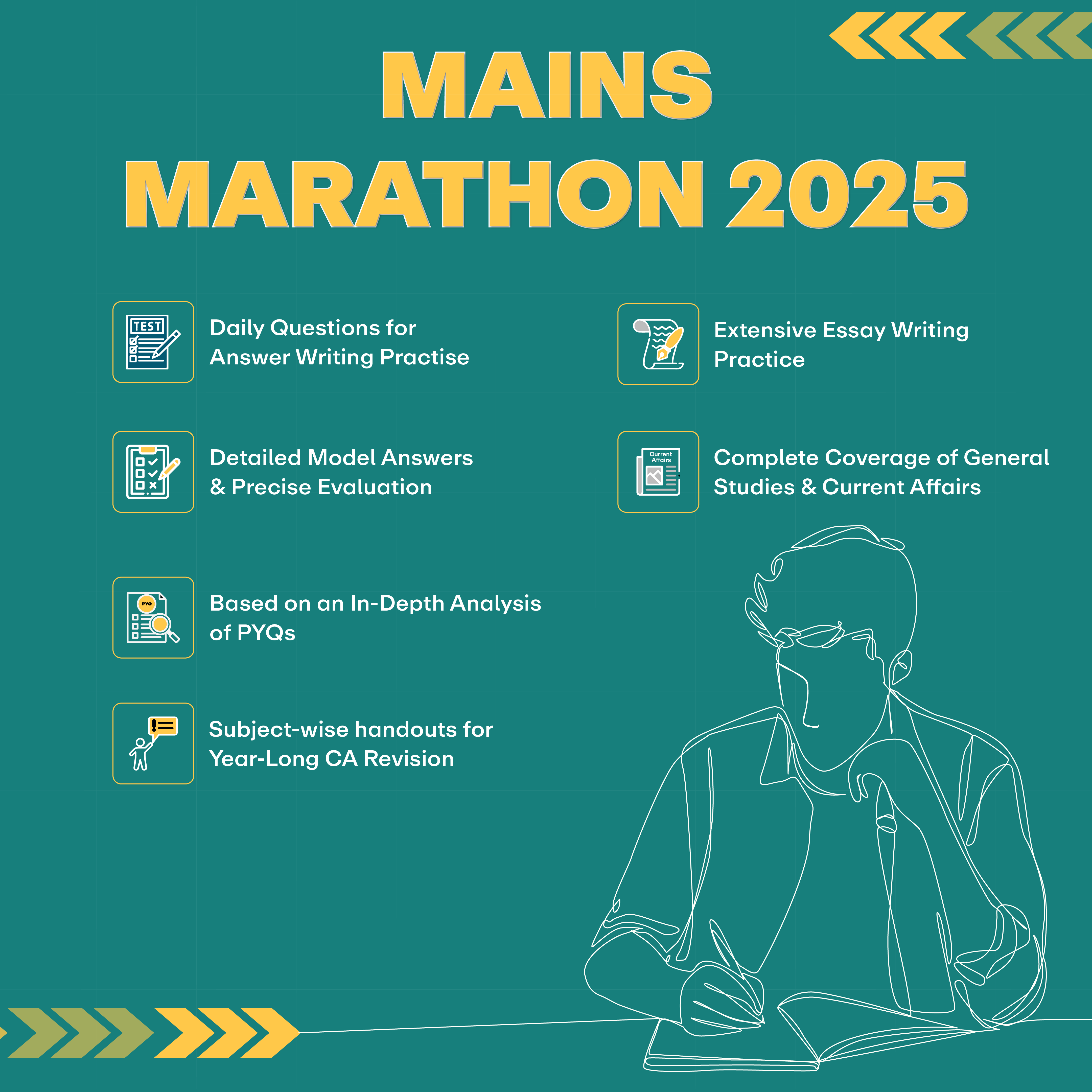
Uttar Pradesh Switch to Hindi
Jahnavi Dangeti
Why in News?
Jahnavi Dangeti, a 23-year-old from Palakollu, West Godavari district, Andhra Pradesh, has been selected as an Astronaut Candidate (ASCAN) for the 2029 space mission of Titan Space Industries (TSI), a U.S.-based private space research agency.
An Astronaut Candidate (ASCAN) is an individual who has been selected by a space agency or organization for astronaut training, with the goal of qualifying them for spaceflight missions.
Key Points
About Jahnavi Dangeti
- She completed her schooling in Godavari district, then pursued a Bachelor's in Electronics and Communication Engineering at Lovely Professional University (LPU) in Punjab, while her parents, Padmasri and Srinivas, reside in Kuwait.
- She became the youngest foreign Analog Astronaut and the first Indian at the Analog Astronaut Training Centre (AATC) in Kraków, Poland, in 2022.
- She has worked with the International Astronomical Search Collaboration (IASC), sponsored by NASA, and contributed to asteroid discovery using the Pan-STARRS telescope in Hawaii.
- Jahnavi has received multiple awards, including the People’s Choice Award at the NASA Space Apps Challenge and the Young Achiever Award at ISRO's World Space Week celebrations.
- Union Minister of Civil Aviation congratulated her for becoming the first Indian to complete NASA’s International Air & Space Programme, marking her achievement as a proud moment for India.
About Titans Space Mission
- The mission, set for 2029, will be led by Colonel (Retd.) William McArthur Jr., a veteran NASA astronaut.
- The US-based mission will take around five hours, during which time the crew will fly around the planet twice, experiencing two sunrises and two sunsets.
- The mission will yield close to three hours of continuous zero gravity, providing a revolutionary environment for scientific investigation and human spaceflight development.
- Jahnavi will begin astronaut training in 2026, which will include flight simulations, spacecraft procedures, survival training, and medical and psychological evaluations.
Other Key Indian Space Milestones:
- Axiom-4 (Ax-4) Mission (2025): Group Captain Shubhanshu Shukla became the second Indian to travel to space and will be the first to visit NASA's International Space Station (ISS).
- The four-member crew(Peggy Whitson of the US, Slawosz Uznanski-Wisniewski from Poland, and Tibor Kapu from Hungary) will carry out 60 scientific experiments, including seven contributed by India.
- ISRO's experiments aim to enhance our understanding of space, its biological effects, and microgravity, with one key experiment examining the impact of spaceflight on six types of crop seeds.
- Russian Soyuz Mission (1984): Rakesh Sharma became the first Indian to fly to space, marking a historic milestone for India’s space journey.


Uttar Pradesh Switch to Hindi
CIP-South Asia Regional Centre (CSARC), Agra
Why in News?
The government has approved the establishment of the South Asia regional center of the Peru-based International Potato Center (CIP) in Singna, Agra district, Uttar Pradesh.
- The CIP regional centre in India will cater to both domestic farmers and those in other South Asian countries.
Key Points
- Objective: The primary objective of the project is to enhance food and nutrition security, increase farmers' income, and generate employment by improving potato and sweet potato productivity, post-harvest management, and value addition.
- Project Cost: The Uttar Pradesh government has allocated 10 hectares of land for the proposed centre.
- The total cost of the project is ₹171 crore, with India contributing ₹111 crore and the CIP (International Potato Center) providing ₹60 crore.
- Impact on Employment: India’s potato sector holds significant potential for job creation in areas such as production, processing, packaging, transportation, marketing, and the broader value chain.
- Innovation: The CSARC (Central Potato and Sweet Potato Research Centre) will develop high-yielding, nutrient-rich, and climate-resilient varieties of potatoes and sweet potatoes, which will accelerate sustainable development not only in India but also across South Asia through world-class scientific research and innovation.
- India’s Potato Production: India is the second-largest producer and consumer of potatoes globally, with a production of 51.30 million tonnes in 2020.
- Together, India and China account for more than one-third of the global potato production, which totaled 359.07 million tonnes in 2020.
- Key Producing States in India: Uttar Pradesh and West Bengal lead potato production, each contributing 15 million tonnes in 2020-21.
- Bihar produces 9 million tonnes, with Gujarat, Madhya Pradesh, and Punjab also being significant contributors.
Related Institutions
- International Potato Center (CIP): It was founded in 1971, is headquartered in Lima, Peru, and focuses on potato, sweet potato, and Andean roots and tubers.
- China established the China Center for Asia Pacific (CCCAP) in Yanqing, Beijing, in 2017 to serve the East Asia and Pacific region.
- Indian Council of Agricultural Research (ICAR): The Indian Council of Agricultural Research (ICAR) operates two institutions focusing on tuber crops: ICAR-CPRI (Central Potato Research Institute) in Shimla, which works on potatoes, and ICAR-CTCRI (Central Tuber Crops Research Institute) in Thiruvananthapuram, which focuses on sweet potatoes.
- Other Agricultural Centre Establishment: In 2017, the Ministry of Agriculture supported the establishment of a regional centre for the Philippines-based International Rice Research Institute (IRRI) in Varanasi, India.


Bihar Switch to Hindi
Bihar's First Nuclear Power Plant
Why in News?
Bihar will be among the first six states in India to receive its first atomic power plant under the country's new Nuclear Energy Mission.
Key Points
About First Nuclear Power Plant
- Announcement and Approval: During the 5th Eastern Region Power Ministers' meeting in Patna, the Union Power Minister announced the Centre's approval for Bihar to set up a nuclear power plant based on Small Modular Reactor (SMR) technology.
- The meeting, attended by representatives from Bihar, West Bengal, Odisha, Jharkhand, and the Andaman & Nicobar Islands, marked a key step towards advancing nuclear energy in the eastern region.
- Significance for Bihar: The project is expected to ensure a stable electricity supply, attract industrial investment, generate employment, and drive technological advancement in the state.
- Given Bihar’s historical challenges with power deficits and limited infrastructure, the initiative marks a transformative shift in its energy landscape.
Nuclear Energy Mission
- Ambitious Capacity Expansion: It aims to increase India’s nuclear power capacity from the current 8,180 MW (as of January 30, 2025) to 100 GW by 2047, positioning nuclear energy as a major pillar in India’s energy mix and supporting long-term energy security and sustainability.
- Focus on Indigenous Technology: The mission prioritizes the research and development of indigenous technologies, especially Small Modular Reactors (SMRs), with an allocation of ₹20,000 crore.
- The goal is to develop and operationalize at least five indigenously designed SMRs by 2033, leveraging India’s expertise in Pressurized Heavy Water Reactors (PHWRs).
- It also seeks to set up one nuclear power plant in each state to enhance India's energy security.
- Private Sector Participation: Legislative changes are planned to amend the Atomic Energy Act, 1962, and the Civil Liability for Nuclear Damage Act, 2010, to encourage private sector investment and collaboration.
- This will facilitate faster deployment of nuclear projects, innovation, and economic growth, with private entities contributing land, capital, and funding, while NPCIL manages reactor operations.
Small Modular Reactors (SMRs)
- SMRs are advanced nuclear reactors with a capacity of up to 300 MW(e), about one-third of traditional reactors.
- SMRs represent an advanced, cost-effective, and safer nuclear technology suitable for regions with moderate power demands, especially where large-scale plants are not feasible.
- Bhabha Atomic Research Centre (BARC) is working on SMRs for repurposing retiring coal-based power plants and meeting the energy needs of remote areas.
- The Department of Atomic Energy (DAE) is also focusing on developing reactors such as high-temperature gas-cooled reactors for hydrogen generation and molten salt reactors to utilize India’s vast thorium resources.
Other Recent Developments in Power Sector
- Battery Energy Storage Projects: In addition to the nuclear plant, the Central Government has approved a 1,000 MW battery storage capacity project in Bihar.
- This project will support renewable energy integration and enhance grid stability, with viability gap funding of ₹18 lakh per megawatt.
- The Prime Minister had also laid the foundation stone for a 500 MWh Battery Energy Storage System (BESS) project in Siwan on 20th June 2025.
- Additional Support to Bihar: To support peak summer demand, the Centre has also agreed to supply an additional 500 MW of electricity to Bihar for the next three to six months.
- The state was also commended for installing eight million smart meters and achieving a substantial reduction in technical and commercial losses, indicating significant progress in the power sector.


Jharkhand Switch to Hindi
Revised Jharia Master Plan (JMP)
Why in News?
The Cabinet Committee on Economic Affairs (CCEA) approved the Revised Jharia Master Plan (JMP) for addressing issues related to fire, land subsidence, and rehabilitation of affected families at the Jharia coalfield in Jharkhand.
Key Points
About Revised Jharia Master Plan (JMP)
- Total Financial Outlay: The total financial outlay for the implementation of the revised plan is ₹5,940.47 crore.
- The phase-wise approach will prioritize handling fire, subsidence, and the rehabilitation of families from the most vulnerable sites.
- Livelihood Grant and Support: The revised plan provides a livelihood grant of ₹1 lakh to both legal title holders (LTH) and non-legal title holders (non-LTH) families.
- In addition, credit support of up to ₹3 lakh will be available through an institutional credit pipeline for both LTH and non-LTH families.
- The plan focuses on generating sustainable livelihoods through targeted skill development programs and income-generating opportunities to ensure economic self-reliance for the rehabilitated families.
- Infrastructure Development: The resettlement sites will be developed with essential infrastructure and amenities, including roads, electricity, water supply, sewerage, schools, hospitals, skill development centers, community halls, and other common facilities.
- Implementation and Support: The implementation of these provisions will be carried out in accordance with the recommendations of the Committee for Implementation of the Revised Jharia Master Plan.
- To support livelihood initiatives, the Jharia Alternative Livelihoods Rehabilitation Fund will be established, promoting livelihood-related activities.
- Skill development programs will also be conducted in collaboration with Multi-Skill Development Institutes operating in the region.
About Jharia Coalfield
- Historical Background: The Jharia Coalfield, located in Jharkhand, India, has been operational since 1916, with coal mining dating back to this period.
- It has faced persistent issues with coal mine fires, particularly due to unscientific mining methods used before nationalization.
- Fires in Jharia: Since the first fire was reported in 1916, Jharia has been plagued by underground coal fires, mainly caused by the unsystematic mining practices of earlier private operators.
- These fires have severely impacted the environment and the local population, causing health hazards, land degradation, and subsidence.
- Nationalization and Government Intervention: After the nationalization of coal mines in India, experts, including a Polish team and Indian specialists, studied the fires in 1978.
- The Government of India constituted a High-Power Committee in 1996 to address fire and subsidence issues in the region.
- Jharia Master Plan (2009): The Jharia Master Plan was approved by the Government of India in 2009 with an estimated investment of Rs. 7112.11 crores.
- The plan aimed to manage coal fires, rehabilitate affected communities, and ensure safe coal extraction, spanning a ten-year period with a two-year pre-implementation phase.
- Post expiration of the Master Plan in 2021, the Ministry of Coal continued to monitor and fund fire management and rehabilitation projects.
- A committee in 2022 recommended further actions to extinguish fires, offer compensation, and provide essential infrastructure for resettled families.
- Progress in Fire Management: Through scientific measures and technology, the number of fire sites in Jharia was reduced from 77 to 27.
- The fire-affected area shrunk from 17.32 sq. km to 1.80 sq. km by implementing techniques such as surface sealing, trenching, and inert gas infusion.
- Rehabilitation and Resettlement: The plan focused on relocating families affected by fire and subsidence, with BCCL (Bharat Coking Coal Limited) constructing houses for the displaced population.
- Rehabilitation faced resistance from landowners, and difficulties arose due to the lack of a legal framework for land rights transfer, complicating resettlement efforts.
- Technological challenges in assessing underground fires and public skepticism about land acquisition for coal extraction added to the complexity.
- Coal Extraction:
- The region holds substantial coal reserves, with approximately 43 million tons of coal extracted as of June 2023.
- Coal extraction remains a priority, with ongoing efforts to balance environmental and safety concerns with production goals.




.png)



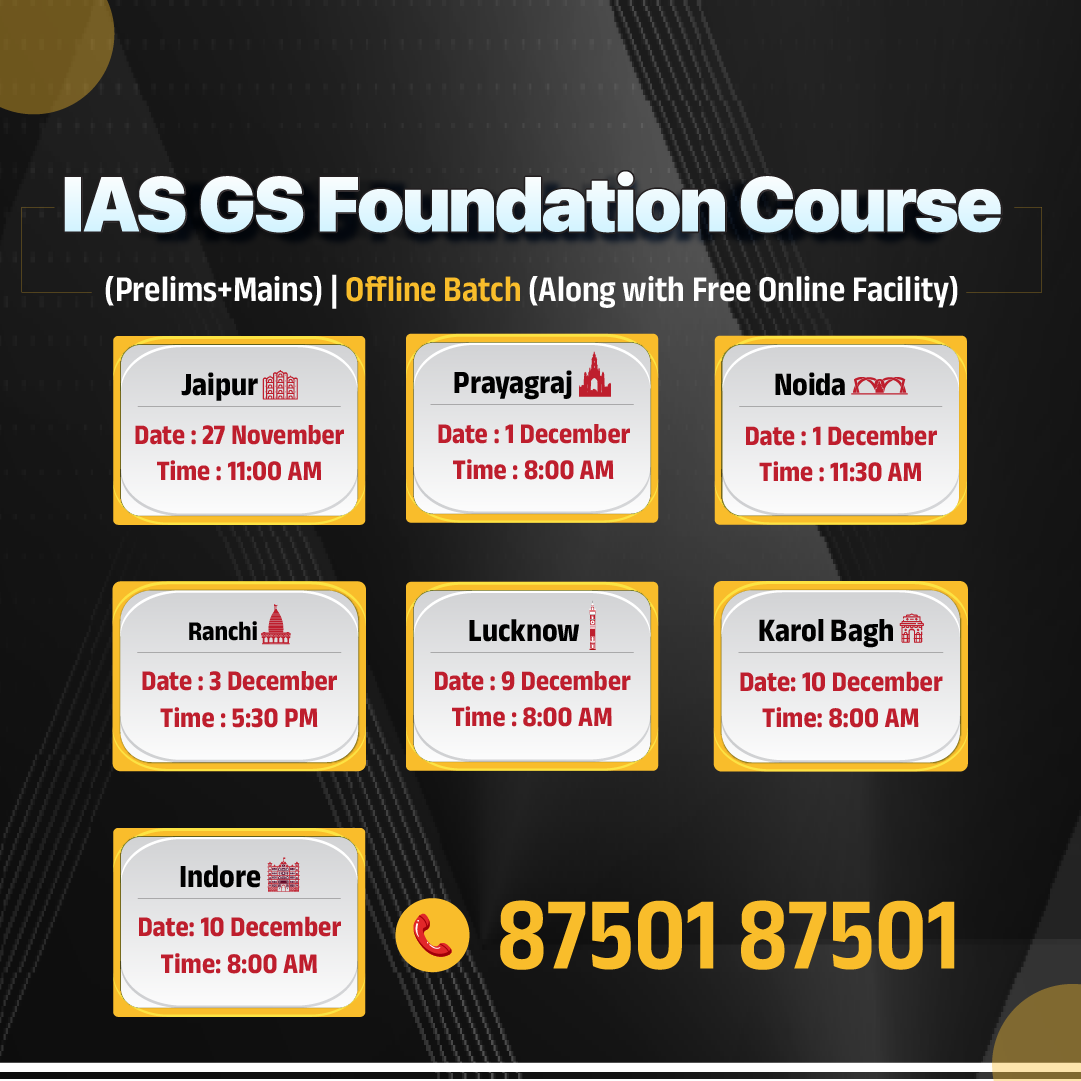
.jpg)










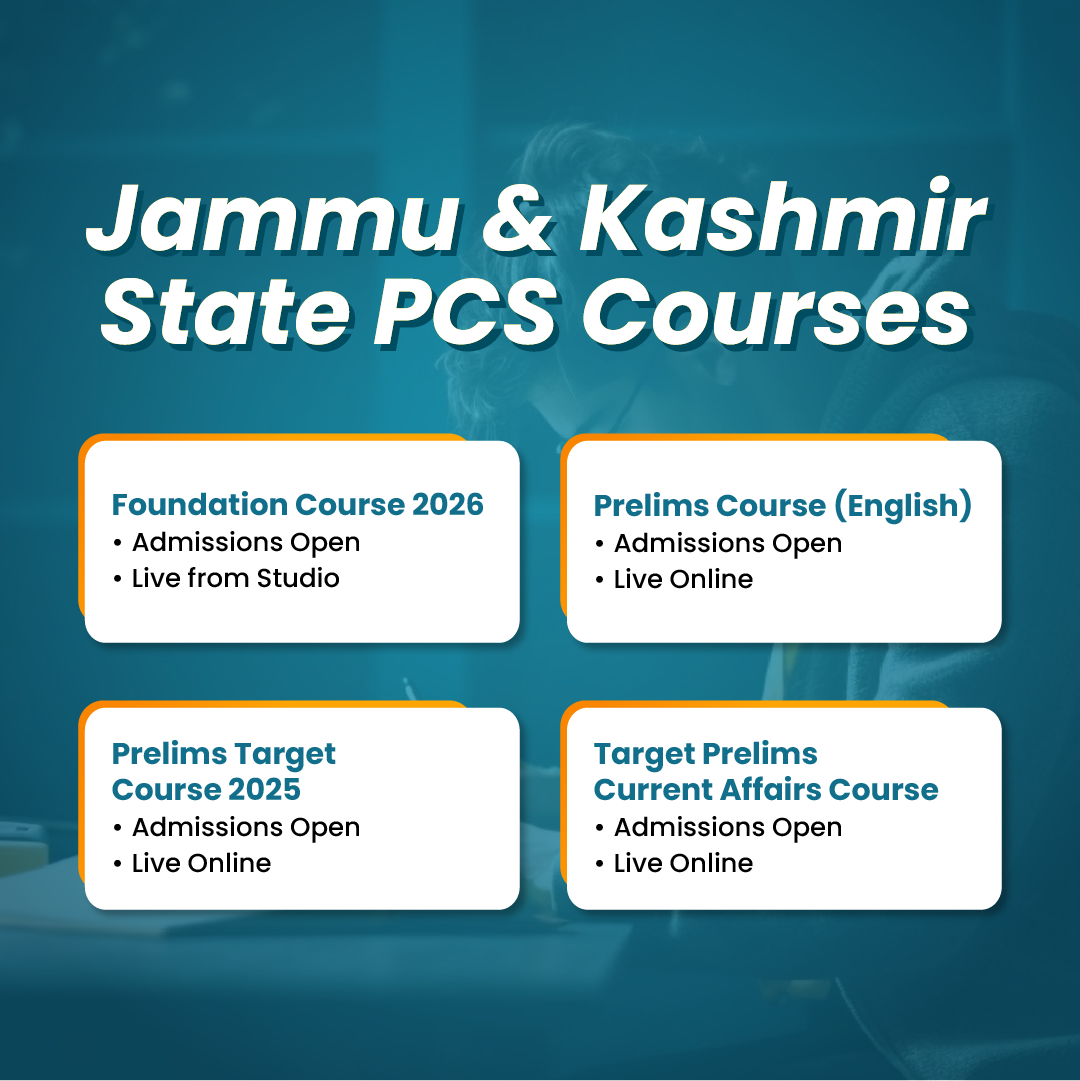







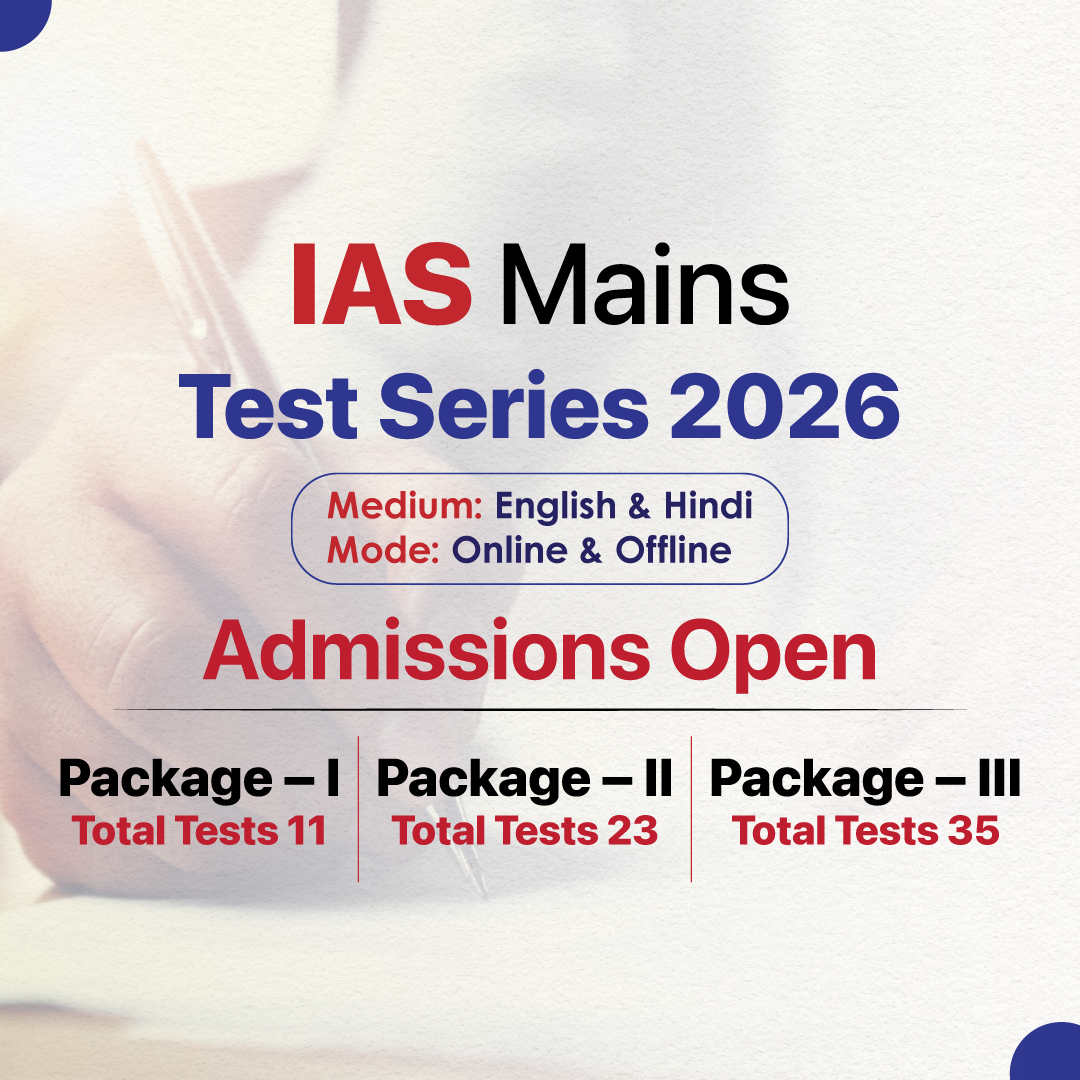

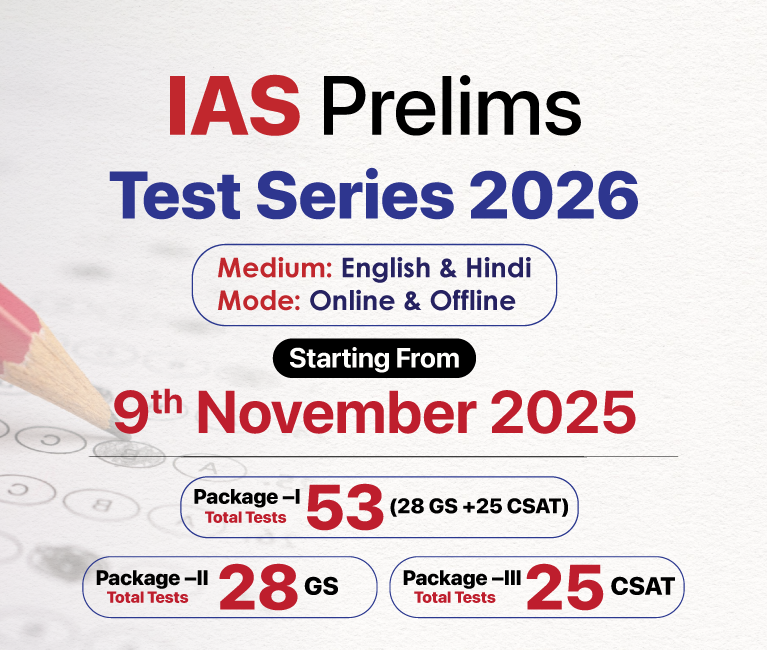


.png)


.jpg)

 PCS Parikshan
PCS Parikshan